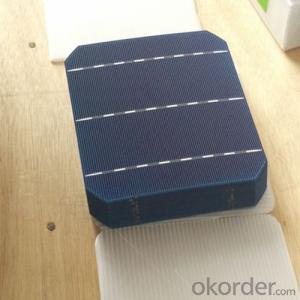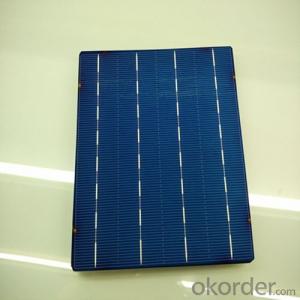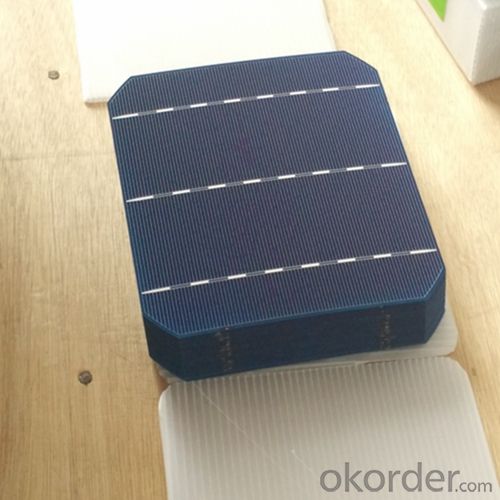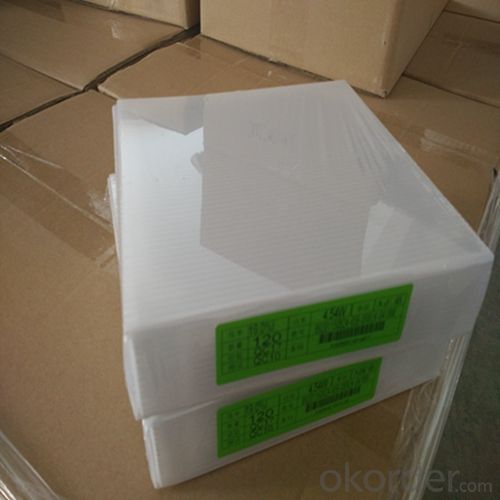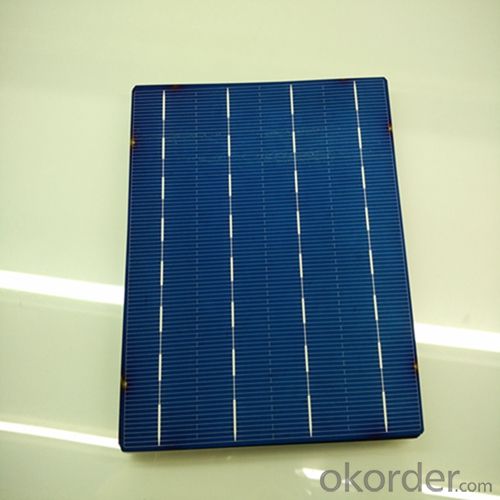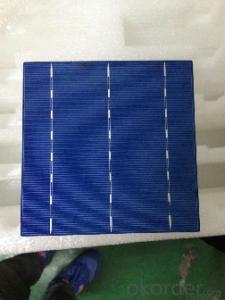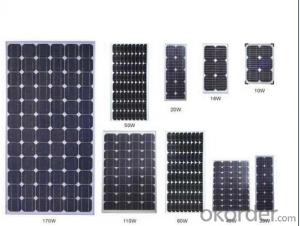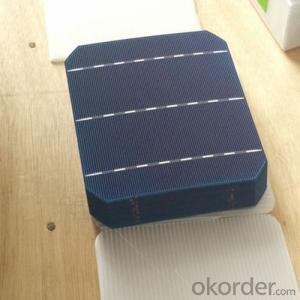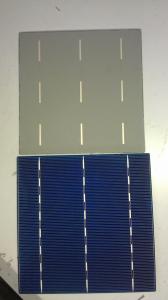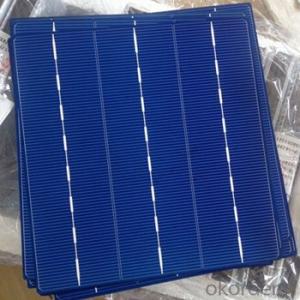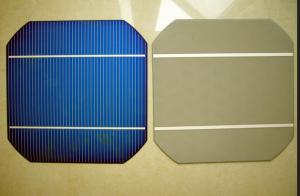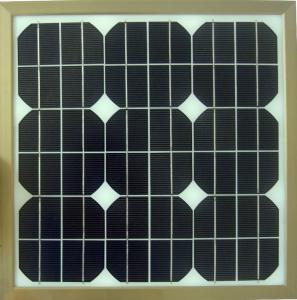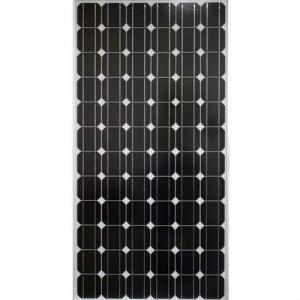Maxeon Gen 5 Solar Cells - Polymono 156x156mm2 Made in China
- Loading Port:
- Shanghai
- Payment Terms:
- TT OR LC
- Min Order Qty:
- 4999 watt
- Supply Capability:
- 6000000 watt/month
OKorder Service Pledge
OKorder Financial Service
You Might Also Like
The operation of a photovoltaic (PV) cell requires 3 basic attributes:
The absorption of light, generating either electron-hole pairs or excitons.
The separation of charge carriers of opposite types.
The separate extraction of those carriers to an external circuit.
In contrast, a solar thermal collector supplies heat by absorbing sunlight, for the purpose of either direct heating or indirect electrical power generation from heat. A "photoelectrolytic cell" (photoelectrochemical cell), on the other hand, refers either to a type of photovoltaic cell (like that developed by Edmond Becquerel and modern dye-sensitized solar cells), or to a device that splits water directly into hydrogen and oxygen using only solar illumination.Characteristic of Mono 156X156MM2 Solar Cells
You are gaining energy independence - add battery backup power for even greater energy security
The cost of electricity is only going to rise – insure against that rising cost
Adaptive cells change their absorption/reflection characteristics depending to respond to environmental conditions. An adaptive material responds to the intensity and angle of incident light. At the part of the cell where the light is most intense, the cell surface changes from reflective to adaptive, allowing the light to penetrate the cell. The other parts of the cell remain reflective increasing the retention of the absorbed light within the cell.[67]
In 2014 a system that combined an adaptive surface with a glass substrate that redirect the absorbed to a light absorber on the edges of the sheet. The system also included an array of fixed lenses/mirrors to concentrate light onto the adaptive surface. As the day continues, the concentrated light moves along the surface of the cell. That surface switches from reflective to adaptive when the light is most concentrated and back to reflective after the light moves along
Mechanical data and design
Format | 156mm x 156mm±0.5mm |
Thickness | 210μm±40μm |
Front(-) | 1.5mm bus bar (silver),blue anti-reflection coating (silicon nitride) |
Back (+) | 2.5mm wide soldering pads (sliver) back surface field (aluminium) |
Temperature Coefficient of Cells
Voc. Temp.coef.%/K | -0.35% |
Isc. Temp.coef .%/K | +0.024%/K |
Pm.Temp.coef. %/K | -0.47%/K |
Electrical Characteristic
Effiency(%) | Pmpp(W) | Umpp(V) | Impp(A) | Uoc(V) | Isc(A) | FF(%) |
18.35 | 4.384 | 0.526 | 8.333 | 0.63 | 8.877 | 78.39% |
18.20 | 4.349 | 0.526 | 8.263 | 0.63 | 8.789 | 78.54% |
18.05 | 4.313 | 0.525 | 8.216 | 0.63 | 8.741 | 78.32% |
17.90 | 4.277 | 0.524 | 8.161 | 0.625 | 8.713 | 78.04% |
17.75 | 4.241 | 0.523 | 8.116 | 0.625 | 8.678 | 77.70% |
17.60 | 4.206 | 0.521 | 8.073 | 0.625 | 8.657 | 77.36% |
17.45 | 4.170 | 0.519 | 8.039 | 0.625 | 8.633 | 76.92% |
17.30 | 4.134 | 0.517 | 8.004 | 0.625 | 8.622 | 76.59% |
17.15 | 4.096 | 0.516 | 7.938 | 0.625 | 8.537 | 76.80% |
17.00 | 4.062 | 0.512 | 7.933 | 0.625 | 8.531 | 76.18% |
16.75 | 4.002 | 0.511 | 7.828 | 0.625 | 8.499 | 75.34% |
16.50 | 3.940 | 0.510 | 7.731 | 0.625 | 8.484 | 74.36% |
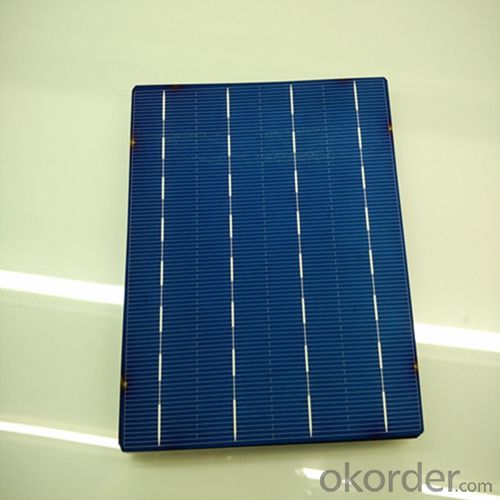
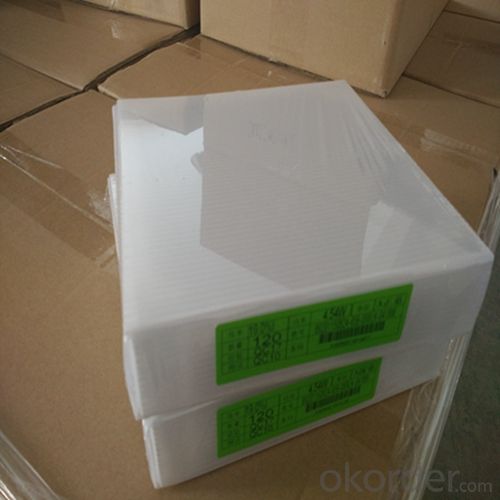
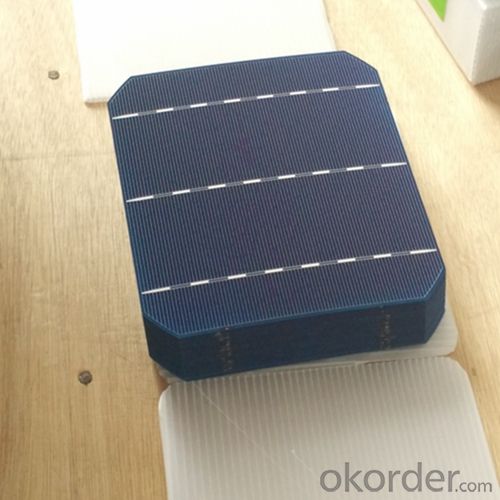

 FAQ
FAQ
Q: What price for each watt?
A: It depends on the quantity, delivery date and payment terms, generally Large Quantity and Low Price
Q: What is your size for each module? Can you tell me the Parameter of your module?
A: We have different series of panels in different output, both c-Si and a-Si. Please take the specification sheet for your reference.
Q: What is your size for each module? Can you tell me the Parameter of your module?
A: We have different series of panels in different output, both c-Si and a-Si. Please take the specification sheet for your reference.
- Q: Can solar cells be used in indoor lighting applications?
- Yes, solar cells can be used in indoor lighting applications. However, their effectiveness may vary depending on the amount of sunlight available indoors.
- Q: Can solar cells be used for powering medical devices?
- Yes, solar cells can be used for powering medical devices. Solar cells can generate electricity from sunlight, which can then be used to power various types of medical devices such as portable medical monitors, insulin pumps, and even small surgical tools. This offers a sustainable and reliable source of energy, particularly in remote or resource-limited areas where access to electricity may be limited.
- Q: Can solar cells be used in combination with batteries?
- Yes, solar cells can indeed be used in combination with batteries. In fact, this combination is quite common in solar power systems. Solar cells generate electricity from sunlight, which can be stored in batteries for later use when the sun is not shining, such as during the night or on cloudy days. This helps provide a continuous and reliable power supply, making solar energy more practical and efficient.
- Q: Are solar cells affected by extreme temperatures?
- Yes, solar cells are affected by extreme temperatures. High temperatures can cause the efficiency of solar cells to decrease, as the excess heat can reduce their ability to convert sunlight into electricity. Conversely, extremely cold temperatures can also impact the performance of solar cells, although to a lesser extent. It is important to note that modern solar cell designs often incorporate measures to mitigate the effects of temperature, such as using materials that can withstand extreme conditions.
- Q: Can solar cells be used for lighting?
- Yes, solar cells can be used for lighting. Solar cells generate electricity from sunlight and this electricity can be used to power light bulbs or other lighting devices. This allows for the use of renewable energy sources and can be particularly beneficial in remote areas or during power outages.
- Q: How do solar cells perform in areas with high levels of pollen?
- Solar cells can be affected by high levels of pollen as it can accumulate on the surface of the cells and reduce their efficiency. The pollen can block sunlight from reaching the cells and hinder their ability to generate electricity. Regular cleaning and maintenance of solar panels in areas with high pollen levels are crucial to ensure optimal performance.
- Q: What is the effect of dust or dirt on solar cell performance?
- The presence of dust or dirt on solar cells can significantly reduce their performance by blocking sunlight from reaching the cells, thereby reducing their efficiency in converting sunlight into electricity. The dust or dirt particles act as a barrier, preventing the photons from reaching the semiconductor material within the solar cells. This decreases the amount of electricity generated, resulting in a decrease in overall power output. Therefore, regular cleaning and maintenance of solar panels is essential to maximize their performance and ensure optimal energy production.
- Q: How do solar cells affect the local ecosystem?
- Solar cells have a minimal impact on the local ecosystem. While their installation may require clearing some vegetation and potentially disrupting wildlife habitats, once operational, solar cells do not emit any pollutants or greenhouse gases. Additionally, they do not consume water or generate noise, reducing their impact on local resources and wildlife. In fact, solar cells can even provide shading for plants and help reduce the urban heat island effect, contributing positively to the local ecosystem.
- Q: Can solar cells be used for powering remote research stations in Antarctica?
- Yes, solar cells can be used for powering remote research stations in Antarctica. Solar cells are a sustainable and reliable source of energy that can harness the abundant sunlight available in Antarctica during the summer months. They can provide a consistent power supply to run essential equipment and facilities at remote research stations, reducing the dependence on fossil fuels and minimizing the environmental impact. Additionally, advancements in solar technology have improved the efficiency and durability of solar cells, making them a viable option for powering these isolated stations in extreme conditions.
- Q: How is the efficiency of a solar cell calculated?
- The efficiency of a solar cell is calculated by dividing the electrical power output of the cell by the incident solar power input. The formula for efficiency is Efficiency (%) = (Power output / Power input) x 100.
Send your message to us
Maxeon Gen 5 Solar Cells - Polymono 156x156mm2 Made in China
- Loading Port:
- Shanghai
- Payment Terms:
- TT OR LC
- Min Order Qty:
- 4999 watt
- Supply Capability:
- 6000000 watt/month
OKorder Service Pledge
OKorder Financial Service
Similar products
Hot products
Hot Searches
Related keywords

